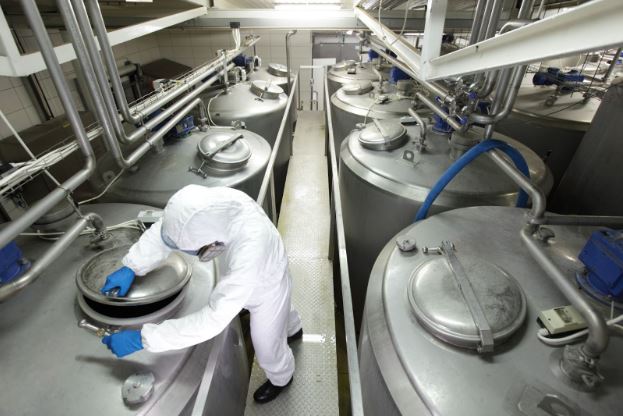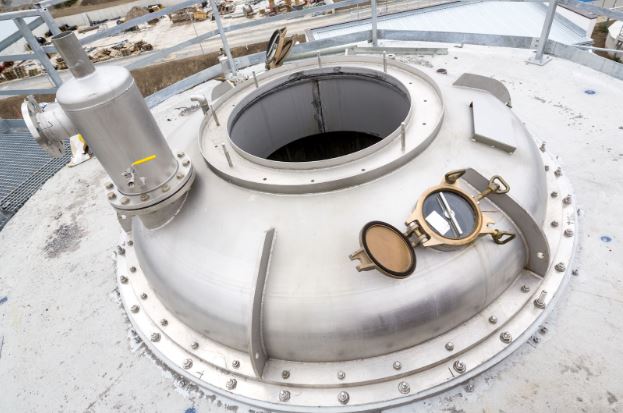Most industrial facilities use tanks as storage spaces for accumulated waste, such as sludge, oil, and even hazardous chemicals. As a result, repeated usage can erode its internal infrastructure and lead to operational inefficiencies.
So, what’s a sustainable solution for facilities that deal with enormous amounts of waste? That is to prioritize industrial tank cleaning!
Importance of Tank Cleaning in Industrial Operations
Not only is industrial tank cleaning essential to production and operations, but it also helps to prevent contamination of products created by various industries that require strict regulatory standards. Regular maintenance helps to protect product integrity, especially when it comes to consumer health and safety.
In addition to meeting safety and regulatory standards, uncleaned tanks can build up sediment over time that can cause leaks and expensive repairs. Some tanks can even pose environmental and workplace hazards through toxic gas emissions and fire risks.
By investing in regular tank cleaning, your business can experience more efficiency, less operational downtime, and a longer lifespan of its equipment.
Benefits of Routine Tank Cleaning
1. More Efficient Operations
Regular tank cleaning is beneficial because it removes any hazardous build-up while minimizing bacterial growth and chemical buildup. All of this is necessary for equipment and machinery to work properly and help industries save on maintenance costs, disruptions, and hazardous contamination.
Overall, clean tanks help maintain smooth operations and promote safer working conditions.
2. Extended Equipment Lifespan
Even stainless steel equipment and tanks can suffer from corrosion due to improper waste storage and lack of consistent cleaning.
That’s precisely why non-abrasive industrial tank cleaning methods can help prolong the life of industrial equipment by lowering the incidence of corrosion and rust, which ensures that operations are more efficient while keeping down any costs of repairs.
3. Improved Worker Safety
Clean tanks also lead to a lower risk of accidents on the job. For one, cleanliness reduces the incidence of bacterial and chemical contamination, which protects workers from skin, respiratory, and other long-term health problems.
Likewise, cleaner tanks ensure that workers can work more efficiently and won’t experience any delays due to tank and equipment breakdowns.
4. Fewer Costs
Businesses can save costs by prioritizing industrial cleaning as a maintenance protocol as opposed to enforcing it due to neglect and disrepair. Investing in maintenance is more cost-effective long-term than paying for repairs and emergency clean-ups.
Not only this, but maintenance helps industries feel at ease that production will go smoothly and their bottom line will be met without unforeseen circumstances.
Regulatory & Compliance Requirements
Another way industries can reap benefits from industrial tank cleaning is that they would comply with OSHA, EPA, and other industry-specific regulations that help to keep their workers and communities safe.
For example, OSHA enforces worker safety through confined space regulations that protect them from hazardous fumes and chemicals. Similarly, EPA regulates the way waste is disposed of and has guidelines on how industrial tank waste is disposed of safely.
Regulatory compliance in many industries is enforced to protect workers, communities, and the environment from waste contamination. These regulations ensure safety and well-being concerning the manufacturing and operational processes and if not enforced, could lead to heavy legal fines.
Industrial cleaning is one of the most effective ways to comply with regulatory laws and ensure good standing in the marketplace and with the public.

How To Choose The Right Industrial Tank Cleaning Methods?
There are many ways to clean a tank efficiently, and the right cleaning method depends on the industry, the materials stored, and the contamination level of the waste. For example, manual cleaning is ideal for small or heavily contaminated tanks, which are often used in the pharmaceutical and some chemical industries that require hands-on inspection.
Automated systems, on the other hand, utilize high-pressure jets (hydro jetting) and other robotic cleaning methods and are ideal for large tanks (which would usually require hefty manpower and time to execute) used in the oil, food processing, and wastewater treatment industries.
Chemical cleaning is used in the most extreme cases of tank cleaning and utilizes chemicals like detergents, solvents, and acids to remove sludge and break down resistant deposits. For instance, chemical industries use chemical cleaning most often, since they deal with hazardous chemical residue that could contaminate the effectiveness of their chemical products.
Chemical cleaning is also ideal for any tanks that require thorough sanitation and prevention of bacterial overgrowth.
Innovations in Tank Cleaning Technology
Due to the level of safety hazards that big tanks can pose to cleaning crews, innovations in industrial cleaning center on automated systems to make the process more efficient and safe.
By utilizing more advanced cleaning systems, industrial cleaning services can provide better services and protect their own workers from safety hazards.
Robotic cleaners can also access hard-to-reach areas and provide a more thorough cleaning with minimal downtime. Let’s look at some innovative cleaning methods and how they can help diverse industries.
- High-Pressure Water Jetting – This cleaning method uses high-pressure water (up to 40,000 PSI) to break down hardened substances. It is most compatible with petrochemical, marine, and wastewater industries.
- Ultrasonic Cleaning – This unique cleaning approach utilizes sound waves to create microscopic bubbles that dislodge hard-to-clean impurities. It is most ideal for delicate equipment and is used heavily by the pharmaceutical and electronics industries.
- Laser Cleaning – This eco-friendly alternative uses high-powered lasers to remove rust, coatings, and contaminants safely and effectively. It is compatible with many industries that are looking for non-abrasive, chemical-free cleaning solutions.
In addition to these technological advancements in industrial tank cleaning, eco-friendly and chemical-free solutions also provide industries that care about sustainability practical solutions.
Environmental Remedies’ Industrial Tank Cleaning Services
No matter the extent of your tank cleaning needs, Environmental Remedies can help you meet regulatory compliance, keep your facilities operational and efficient, and save on repair costs. If you operate in the Atlanta area, make us your choice for industrial tank cleaning and maintenance!
Our team of trained operators and technicians is equipped with the expertise to clean tanks of all sizes, including both underground and aboveground tanks. Reach out to us and get a quote about our services today.






